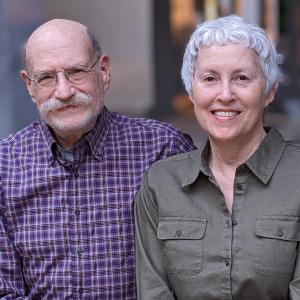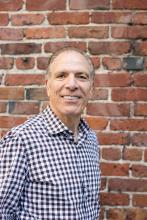Alumni and friends supporting the vision of the ISEB
When Larry and Sally Sears provided the initial support to launch Case Western Reserve University’s hands-on innovation center, they imagined a collaborative space where big ideas could become reality. Since its opening in 2012, the Larry Sears and Sally Zlotnick Sears think[box], a 50,000-square-foot makerspace, has welcomed tens of thousands of visitors from across the campus and community each year.
Now, the alumni couple is continuing their commitment to collaboration with $1 million for the ISEB, with their total support of the university exceeding $18 million.
Recalling his own experiences as a student, an alumnus, an adjunct lecturer and eventually a university trustee, Larry Sears (CIT ’69) said the campus transformation over the last 50 years has been extraordinary, but the promise of the ISEB positions the university to embrace the future.
“The idea of collaboration has become so important,” Sears said. “By doing collaborative work across diverse technologies, the sum of the parts is greater than what we could have accomplished within one discipline.”
Sally Sears (FSM ’72, LYS ’74) sees it as another opportunity for Case Western Reserve to fulfill its mission: “When I think about think[box] and what it has done for the university and the city, I see the ISEB as a continuation of that—of people getting together, collaborating and thinking as a team.”
Enhancing a global reputation
Medtech entrepreneur Joe Mandato, DBA (MGT ‘04) was also an early supporter of think[box], and was similarly inspired to see the idea of innovation through collaboration evolve through ISEB.
The Weatherhead School of Management alumnus has committed $1 million to the project, hoping to provide talented minds with hands-on resources to fulfill their imaginations.
A member of Case Western Reserve’s Board of Trustees, Mandato said his affinity for the university and its faculty and staff is strong. But he’s especially excited for those who will benefit most from the ISEB: the students.
“Cleveland is already a global center of healthcare,” he noted. “Creating something like the ISEB will only enhance our reputation on a global basis and provide an infrastructure to keep innovations coming. This facility is a natural thing to want to support. You want to be able to give the students the infrastructure they need to maximize their output. And we want to continue to draw and recruit the best students in the country.”
Originally published in the summer 2024 issue of Forward Thinking magazine



